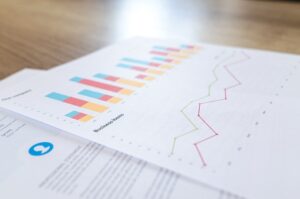student loan forgiveness update
The Latest Updates on Student Loan Forgiveness: What Borrowers Need to Know
Student loan forgiveness has been a topic of great interest and discussion, especially among borrowers who are burdened by their educational debts. The good news is that there have been recent updates and developments in the realm of student loan forgiveness that can potentially alleviate the financial stress faced by many individuals. In this article, we will explore the latest updates and provide valuable information to help borrowers navigate the ever-changing landscape of student loan forgiveness programs.
Understanding the Current Landscape
<p>Before we delve into the recent updates, it’s important to have a clear understanding of the current student loan forgiveness landscape. The existing student loan forgiveness programs include Public Service Loan Forgiveness (PSLF), Income-Driven Repayment (IDR) plans, and various state-specific forgiveness programs. These programs offer borrowers the opportunity to have a portion or the entirety of their student loans forgiven after meeting certain criteria, such as making a certain number of qualifying payments or working in eligible public service professions.</p>
Recent Updates and Developments
1. PSLF Improvements: The Public Service Loan Forgiveness program has undergone improvements to make it more accessible and streamlined for borrowers. The application process has been simplified, and additional resources have been allocated to address the high denial rates that plagued the program in the past. Borrowers can now benefit from a more transparent and efficient path to loan forgiveness if they meet the program requirements.
2. Expansion of IDR Plans: Income-Driven Repayment plans, such as Income-Based Repayment (IBR), Pay As You Earn (PAYE), and Revised Pay As You Earn (REPAYE), have also seen significant updates. These plans offer borrowers the opportunity to make affordable monthly payments based on their income and family size. Recent updates have expanded the eligibility criteria, allowing more borrowers to qualify for lower monthly payments and potentially qualify for loan forgiveness after a certain repayment period.
3. COVID-19 Relief Measures: In response to the COVID-19 pandemic, the government implemented temporary relief measures for federal student loan borrowers. These measures included the suspension of loan payments, 0% interest rates, and the temporary halt of collections and wage garnishments. While these measures are not direct loan forgiveness, they provided much-needed financial relief to borrowers during challenging times.
4. Proposed Legislative Changes: Several legislative proposals have been put forth to address the issue of student loan forgiveness. These proposals aim to expand existing forgiveness programs, provide relief to borrowers with high levels of debt, and explore the possibility of widespread student loan cancellation. While these proposals are still in the legislative process, they highlight the ongoing discussions surrounding student loan forgiveness and the potential for future changes.
What Borrowers Need to Do
With the recent updates in student loan forgiveness, borrowers need to take proactive steps to ensure they are on the right track towards loan forgiveness:
1. Review Your Eligibility: Familiarize yourself with the eligibility criteria for the forgiveness programs you are interested in. Understand the requirements and determine if you meet them or what steps you need to take to become eligible.
2. Stay Informed: Keep up-to-date with the latest news and updates on student loan forgiveness. Follow reputable sources, official government websites, and subscribe to newsletters or notifications to ensure you receive accurate and timely information.
3. Maintain Eligibility: If you are already enrolled in an IDR plan or pursuing PSLF, make sure you adhere to the program requirements. Make your monthly payments on time and submit any necessary paperwork to maintain your eligibility for loan forgiveness.
4. Seek Professional Advice: If you are unsure about your options or need guidance, consider consulting with a student loan expert or a financial advisor specializing in student loans. They can provide personalized advice based on your specific circumstances and help you make informed decisions.
Conclusion
Student loan forgiveness is a complex and evolving landscape, but recent updates have provided some hope and relief for borrowers. By staying informed, understanding the eligibility criteria, and taking proactive steps, borrowers can navigate the system more effectively and maximize their chances of loan forgiveness. It’s essential to monitor the latest updates and remain proactive in managing your student loans. Remember, every borrower’s situation is unique, so consider seeking professional advice for personalized guidance.


